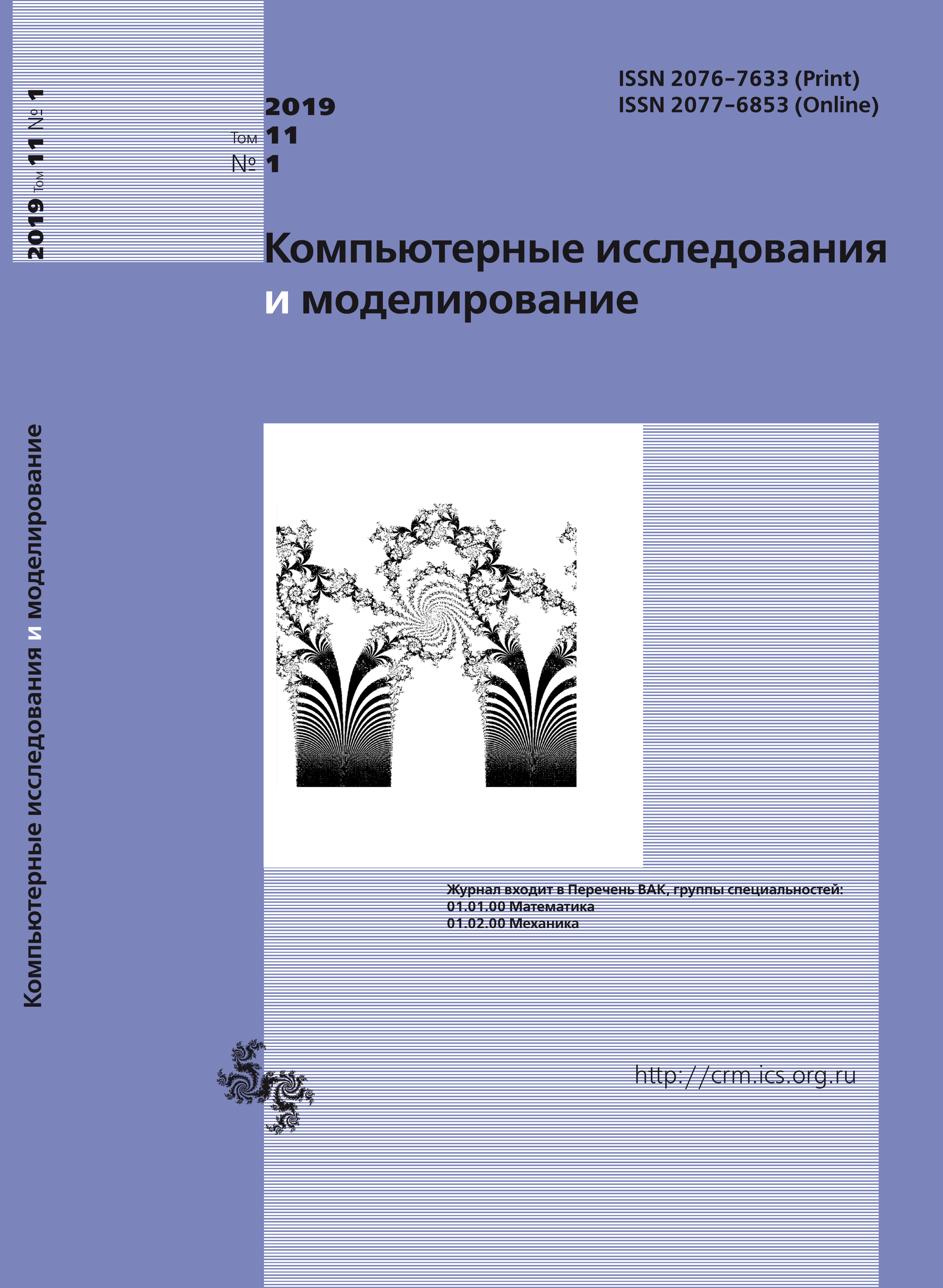All issues
- 2025 Vol. 17
- 2024 Vol. 16
- 2023 Vol. 15
- 2022 Vol. 14
- 2021 Vol. 13
- 2020 Vol. 12
- 2019 Vol. 11
- 2018 Vol. 10
- 2017 Vol. 9
- 2016 Vol. 8
- 2015 Vol. 7
- 2014 Vol. 6
- 2013 Vol. 5
- 2012 Vol. 4
- 2011 Vol. 3
- 2010 Vol. 2
- 2009 Vol. 1
Weighthed vector finite element method and its applications
Mathematical models of many natural processes are described by partial differential equations with singular solutions. Classical numerical methods for determination of approximate solution to such problems are inefficient. In the present paper a boundary value problem for vector wave equation in L-shaped domain is considered. The presence of reentrant corner of size 3π/2 on the boundary of computational domain leads to the strong singularity of the solution, i.e. it does not belong to the Sobolev space H1 so classical and special numerical methods have a convergence rate less than O(h). Therefore in the present paper a special weighted set of vector-functions is introduced. In this set the solution of considered boundary value problem is defined as R_ν-generalized one.
For numerical determination of the R_ν-generalized solution a weighted vector finite element method is constructed. The basic difference of this method is that the basis functions contain as a factor a special weight function in a degree depending on the properties of the solution of initial problem. This allows to significantly raise a convergence speed of approximate solution to the exact one when the mesh is refined. Moreover, introduced basis functions are solenoidal, therefore the solenoidal condition for the solution is taken into account precisely, so the spurious numerical solutions are prevented.
Results of numerical experiments are presented for series of different type model problems: some of them have a solution containing only singular component and some of them have a solution containing a singular and regular components. Results of numerical experiment showed that when a finite element mesh is refined a convergence rate of the constructed weighted vector finite element method is O(h), that is more than one and a half times better in comparison with special methods developed for described problem, namely singular complement method and regularization method. Another features of constructed method are algorithmic simplicity and naturalness of the solution determination that is beneficial for numerical computations.
Indexed in Scopus
Full-text version of the journal is also available on the web site of the scientific electronic library eLIBRARY.RU
The journal is included in the Russian Science Citation Index
The journal is included in the RSCI
International Interdisciplinary Conference "Mathematics. Computing. Education"







